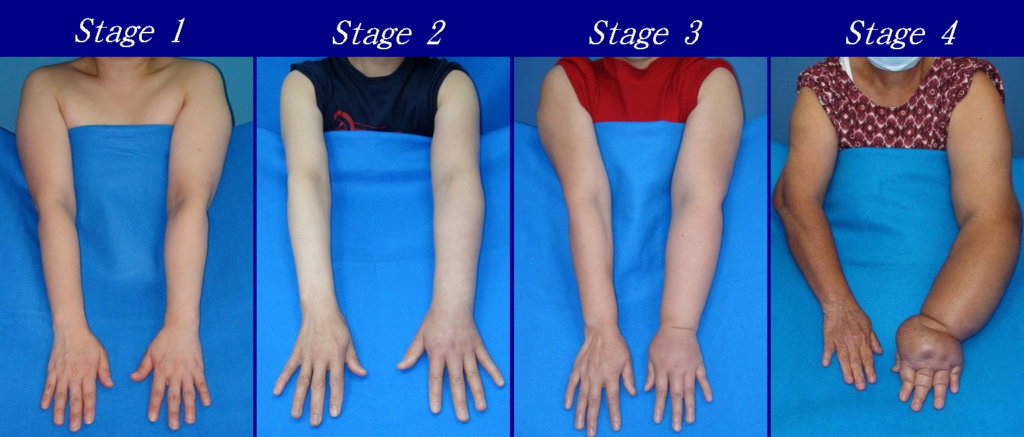As we have written about in the past, cancer is one of the most prevalent and lethal diseases today. According to estimates from the American Cancer Society’s Statistics Center, more than 1.9 million people will be diagnosed with cancer in the U.S. this year. 15% of those cases will be breast cancer, the most prevalent type of cancer.

The good news is that despite more Americans receiving a cancer diagnosis, death rates across multiple types of cancer are holding steady or decreasing, including for breast cancer survivors. In addition, it’s been shown that working with a physical therapist throughout treatment for breast cancer can help your body during cancer treatments, keeping you strong while your body withstands both the cancer and the treatments for it.
There are three key ways physical therapy can help breast cancer patients:
Improving mobility
One common side effect of the treatment for cancer is edema, the clinical name for swelling. Breast cancer patients often have lymphedema after dissection of the lymph nodes or radiation treatments in the upper body, explains Peltz and Associates Physical Therapy, a Physiquality member in California with three lymphedema therapists and an oncology rehabilitation program. Lymphedema disrupts the lymphatic system, which transfers fluids throughout our body, and is particularly common for breast cancer patients in their arms, hands or chest. Physiquality member Spooner Physical Therapy notes it can affect up to 40% of breast cancer patients.

Lymphedema is not just swelling that goes away on its own. It can cause limbs to feel heavy and even become infected, and, as you can see in the image above, lymphedema in the more intense stages, like Stage 3 and Stage 4, can particularly affect mobility. The experts at Spooner Physical Therapy note that physical therapy for breast cancer-related lymphedema can help reduce and manage current symptoms and lessen the risk of long-term complications.
Another common side effect from the surgeries and radiation used to treat breast cancer is the formation of internal scar tissue; this can also limit a patient’s range of motion during recovery. Arizona Orthopedic Physical Therapy, a Physiquality member with several locations in Phoenix, explains that physical therapists offer a variety of manual therapy techniques to reduce scar tissue adhesions and pains associated with scars and surgery as you recuperate.
Improving function
While most discussions of balance and fall prevention focus on aging adults, cancer (and the treatments for it) can also affect balance and movement. In fact, the American Physical Therapy Association has found that a risk of falling is higher for anyone that has been treated for cancer, regardless of age.
As musculoskeletal experts, physical therapists can help breast cancer patients move and feel better. PTs can work with current (and former) patients to improve their balance and strength as they recover from a variety of cancer treatments. Arizona Orthopedic Physical Therapy notes that patients can even do therapy while under treatments like chemotherapy and radiation therapy, but only low-intensity exercise. Physical therapists can work with your oncologist to understand what treatments are being done, and craft an exercise program with that in mind, helping you strengthen your body as you recover.

Improving quality of life
Up to 80% of cancer survivors report some type of debilitating fatigue, during or after cancer treatment, often referred to as cancer-related fatigue, or CRF. Another side effect is called “chemo brain,” described by doctors as chemotherapy-induced cognitive impairment. By any name, it refers to cancer patients having difficulty paying attention, as well as processing and remembering information. Such side effects make it difficult to return to work or even enjoy daily activities.
Physical activity has been shown to reduce the effects of CRF while also improving mental focus and helping patients feel more alert. Arizona Orthopedic Physical Therapy notes that deep breathing exercises can help with relaxation and mental health; adding yoga stretches can improve both mindfulness and flexibility. When it’s safe to increase the intensity of your exercise, aerobic activities like walking, jogging and swimming can improve both cardiovascular health and your energy levels.
Before starting any exercise regimen, patients should consult with their oncologist or doctor to make sure that physical therapy is appropriate at their particular point of care. Throughout the process, PTs will monitor how a patient responds to treatment and exercise, and they may refer a patient back to their oncologist if they see signs that the patient may need more rest and recuperation before physical activity.
Physical therapists are an excellent resource for health and wellness throughout the continuum of cancer treatment, from initial diagnosis to remission. Use our therapist finder below to locate the Physiquality professional nearest you.
Thank you to our contributors:

Arizona Orthopedic Physical Therapy is a Physiquality member with six locations throughout the Phoenix metropolitan area, including Kids Place, a clinic focused on pediatric PT, OT and SLP. Founded by Ryann and Teri Roberts in 2007, AZOPT believes everyone should have the opportunity to Feel Better, Function Better, and Live Better.

Physiquality member Peltz and Associates Physical Therapy is located in Santa Rosa, California. They are devoted to getting you back to the life you want to live, be it freedom from pain, return to sport, or the ability to do the activities that injury or age has stopped you from doing.

Founded in 1990, Spooner Physical Therapy is a Physiquality member with more than 20 locations throughout Arizona. As a team, they cultivate an environment that is dynamic and fun, resulting in an engaging experience for all that incorporates mind, body and spirit.